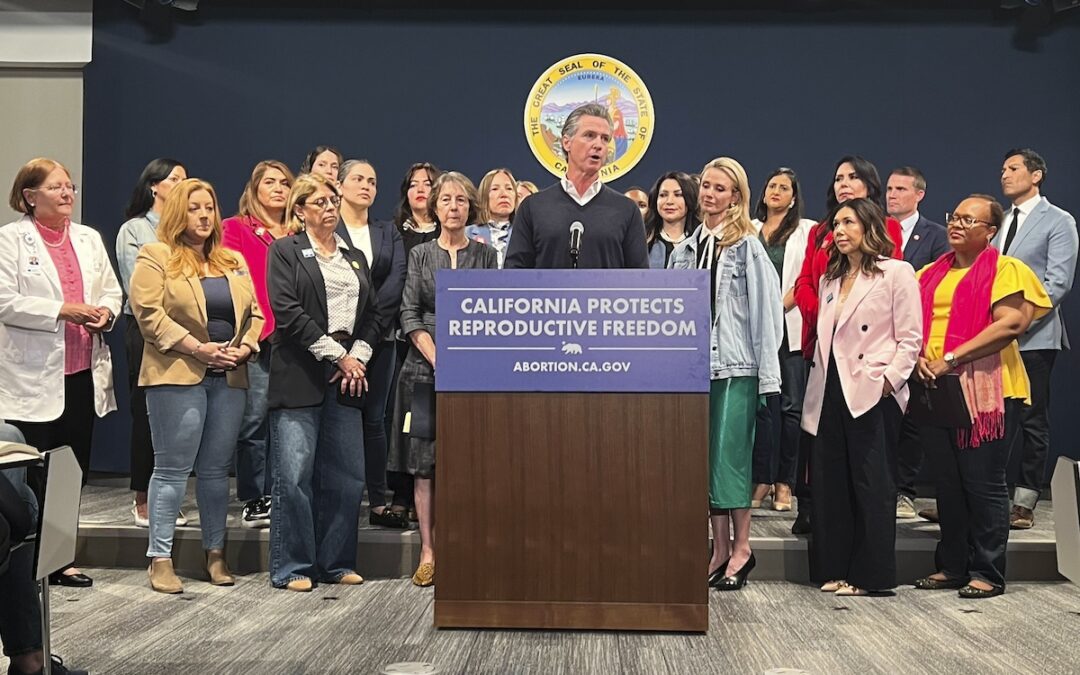
Westwood High School teacher Shaun Reedy instructs students, Tuesday, Oct. 18, 2022 in Mesa, Ariz. (AP Photo/Matt York)
Latino students are about half as likely to have taken a dual enrollment course as white students.
Students who participate in dual enrollment classes in high school are twice as likely to attend and stay in college than students who do not—but only about half of Arizona high schools offer these classes.
The ASU Helios Decision Center for Educational Excellence, a partnership between ASU and Helios Education Foundation, found major gaps in dual enrollment offerings in the state.
In 2020, only about 24% of high school graduates in Arizona took at least one dual enrollment course, according to a report the Helios Decision Center released in 2023.
One factor in Arizona students’ low dual enrollment numbers is lack of access. This can be resolved in three ways, according to Paul Perrault, senior vice president of community impact and learning at Helios Education Foundation: financial support for students from low-income backgrounds, financial incentives for schools, and expanded training for high school teachers to be certified to teach dual enrollment courses.
Identifying the Gap
Latino students are about half as likely to have taken a dual enrollment course as white students, and students from low-income households are only about half as likely to have participated in dual enrollment, Perrault said.
The report also points to inequitable access to dual enrollment classes, lack of policies helping students and their families pay for dual enrollment classes, lack of any standardization in determining eligibility for dual enrollment, and a lack of certified teachers to teach the courses as contributors to the problem.
“One of our principals [said] finding a physics teacher that can teach dual enrollment is like finding a unicorn,” said EJ Anderson, director of student services at Rio Salado Community College.
What Are the Benefits of Dual Enrollment?
Having college knowledge—essentially, understanding what it is like to be successful in a college class and learning how to navigate through the college system—is one of the biggest benefits of dual enrollment, Anderson said.
“It gives those students that may not be thinking about it a great opportunity to explore college classes in a safe environment,” Anderson added. “Because they’re at their home campus with their high school classmates with a teacher they’re familiar with, but that teacher is qualified to teach college classes.”
Students’ first semester in college is often the one where they struggle the most because of differences in rigor and a lack of familiarity with the systems to navigate, said Dana Fresca, dean of enrollment services at South Mountain Community College.
“[Dual enrollment] is an affordable and accessible option that gives [students] a head start on a college degree, so they could potentially graduate college quicker,” Fresca said.
For both dual and traditional enrollment, tuition is $85 a credit hour at Maricopa County Community Colleges, compared to ASU online at between $561 and $1,343 per credit hour.
In the fall, tuition at Maricopa County Community Colleges will go up to $97 per credit hour, Anderson said.
How Do Students Learn About Their Options?
Sharing research to try to improve educational opportunities only goes so far, Perrault said, and student outreach by high schools and community colleges is where gains are made.
That’s why Mesa Community College has embedded advisors at every Mesa Public High School, said Celina Salinas, director of strategic enrollment development at Mesa Community College.
These advisors connect with students in the classroom, conduct presentations and information sessions, and attend and run family nights and orientations, Salinas said.
RELATED: Single Moms in Arizona Can Get Free Higher Education Through This Program
“We recognize that family engagement is really important to gaining support, awareness, and information into students’ minds about the benefits of early college or dual enrollment programming,” Salinas said.
Family engagement is even more important among the highest-need families, such as low-income, first-generation, or other groups that do not have equitable access to opportunities based on the high school they attend, Salinas said.
Phoenix Union High School District has an office of staff who support the dual enrollment program in that district, where they provide a nurturing environment to students, said Fresca. The district—which offers bilingual support—employs 133 teachers who can teach dual enrollment classes.
“We do presentations, we send out flyers, we have parent meetings, we have teacher meetings, we try to get outreach to all the students,” said Anderson. “I’ve had staff that have done 10 to 15 presentations in one day, trying to get to all the students as they can.”
The process of finding the right courses, signing up, and going through the financial aid paperwork is complicated for adults, let alone high school kids, said Tony Camp, executive director of teaching and learning for Phoenix Union High School District.
In the last school year, Phoenix Union High Schools had about 1,100 students in one or more dual enrollment courses. Now, Camp said, the district has about 2,100—almost double.
He said the district is working to improve student awareness that dual enrollment courses are an option.
Phoenix Union High Schools meet with partner colleges monthly to make sure they are working together, Pallisard said.
“We share those students and we share responsibility for them as well, to make sure that they have everything they need to be successful,” Pallisard said.
In Phoenix Union High School District, their highest number of dual enrollments are at Phoenix College. About 93% of those students were awarded the Maricopa Grant, which pays for up to six credit hours, Camp said.
What About AP Classes?
Advanced Placement, or AP classes, are another option for students looking to get college credits from classes they take in high school.
AP classes are courses offered at the high school level that are considered more rigorous than a typical high school course. Students who take these classes have the opportunity to pay to take an exam at the end of the year that determines if they receive college credit or not.
“Depending on your score, it will depend on how or if that credit can be applied. Some schools may only take scores of four or five, some take threes,” Fresca said. “If you fail the test, you may have to take it again and pay for it again.”
RELATED: Nearly Half a Million Arizonans Qualify for Student Debt Relief. Here’s Why They Haven’t Gotten It Yet.
Each test in the 2021-22 school year cost $96, according to the College Board.
According to the ASU-Helios report, only 53% of schools in Arizona offer either dual enrollment or AP classes, 35% offer both, and 47% offer neither. Thirty-eight percent of students enroll in AP, and 24% enroll in dual enrollment.
“The AP tests, for example, aren’t teaching you what it’s like to take a college class—you’re just taking a test,” Fresca said.
A higher percentage of dual enrollment students earn transferable college credit in university courses than those who took AP, with 95% of students enrolled in dual enrollment earning college credit while in high school compared to 37% of students enrolled in AP, according to the report.
Looking for the latest Arizona news? Sign up for our FREE daily newsletter.
Politics

Democrats successfully force vote on repealing 1864 abortion ban, passes House
The Arizona legislature moved forward two bills Wednesday that would repeal the state’s 1864 abortion ban. A bill to repeal the ban has been...

State Official: 1864 abortion ban gives Arizona ‘black eye’
Arizona’s role at the forefront of the climate crisis, defending democratic elections, and protecting reproductive rights has caught the attention...
Local News

Arizona Sens. Anthony Kern, Jake Hoffman, indicted for fake election scheme
Eighteen individuals involved in a conspiracy to overturn Arizona’s election results in 2020 were indicted by a grand jury Wednesday and charged...

Gov. Gavin Newsom wants to let Arizona doctors provide abortions in California
California law generally allows abortion up to the point of fetal viability, which is around 24 weeks. SACRAMENTO, Calif. (AP) — Arizona doctors...





